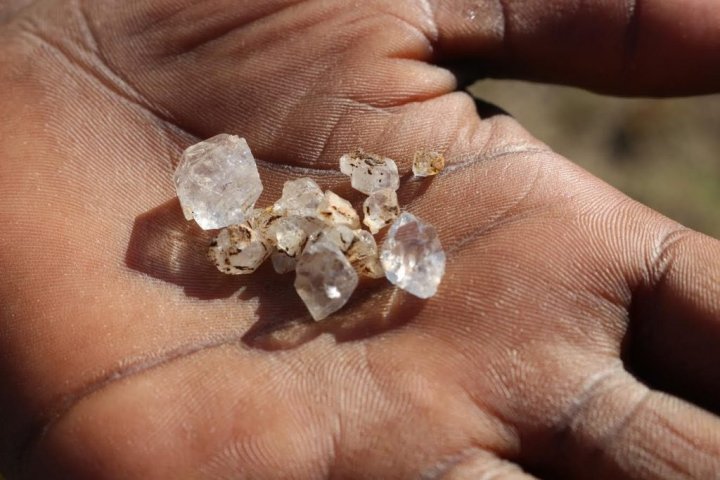Stones discovered in KwaHlathi are quartz crystals
KwaHlathi has over the past few days been gripped by excitement following the discovery of stones which locals believed were diamonds.

- Country:
- South Africa
Tests have revealed that the stones discovered in the KwaHlathi area, outside Ladysmith, are not diamonds but quartz crystals.
Addressing the media on Sunday, KwaZulu-Natal Economic Development, Tourism and Environmental Affairs MEC Ravi Pillay said the tests conducted conclusively revealed that the stones discovered in the area are not diamonds “as some had hoped”.
“In fact, what has been discovered are quartz crystals that are common across the Karoo Supergroup with an extensional fracture plane within and along with the contact of Karoo dolerite sill. The value, if any, of the quartz crystals is yet to be established but it must be mentioned that the value of quartz crystals is very low compared to that of diamonds,” Pillay said.
KwaHlathi has over the past few days been gripped by excitement following the discovery of stones which locals believed were diamonds.
People, including those from other towns and provinces, flocked to the area to participate in the mining activity.
Pillay said this posed a huge risk in terms of COVID-19 regulations and also led to the degradation of the environment.
Following a visit to KwaHlathi, a technical sub-task team consisting of Department of Mineral Resources and Energy KZN Regional officials; the Council for Geoscience; South African Diamond and Precious Metals Regulator and Mintek analysed samples and have produced a preliminary report.
The report shows the site of the informal mining practices is geographically located on the edge of a Karoo dolerite sill, which is not in a zone where diamond occurrences are present.
“This was further confirmed by visual, geological and chemical analyses that were conducted,” Pillay said.
The MEC said the Council for Geoscience, working with various stakeholders will institute a geological mapping programme to further understand any other potential resources that may advance socio-economic development in KwaHlathi.
“Extensive geoscience studies are required in the area, at a regional scale to investigate possibilities of groundwater resources as well as any other lithologies that may be host to other natural resources that may contribute to local development and the economy of the province,” Pillay said.
Interventions by the province
He said the activity seen at KwaHlathi in the past week has highlighted the socio-economic challenges confronting people in the area.
In responding, particularly to the matter of the stones, Pillay said the provincial government has to provide a comprehensive response to the socio-economic challenges, as raised by the community members during its visit to the site, and as communicated by community representatives during a meeting held earlier.
“A report on the findings by the Council for Geoscience and on the socio-economic challenges in the area will be presented to Premier Sihle Zikalala and the entire provincial executive council. This will be the basis for us to formulate a coordinated response to all the challenges.
“Part of the response will have to focus on the issue of road and access to water. We will also formulate a comprehensive plan to rehabilitate the site on which digging is taking place,” Pillay said.
He appealed to the people on-site to vacate the area, warning that what they are involved in has the potential of spreading COVID-19.
“The illegal mining practices also have a negative impact on the environment and land degradation that has been accentuated by the extensive diggings in the area. We reiterate that the mining activity taking place at KwaHlathi is illegal. We urge the community to cooperate with the police and local leadership,” Pillay said.
(With Inputs from South African Government Press Release)
- READ MORE ON:
- Ravi Pillay
- KwaHlathi
- environment
- COVID-19
- stones










